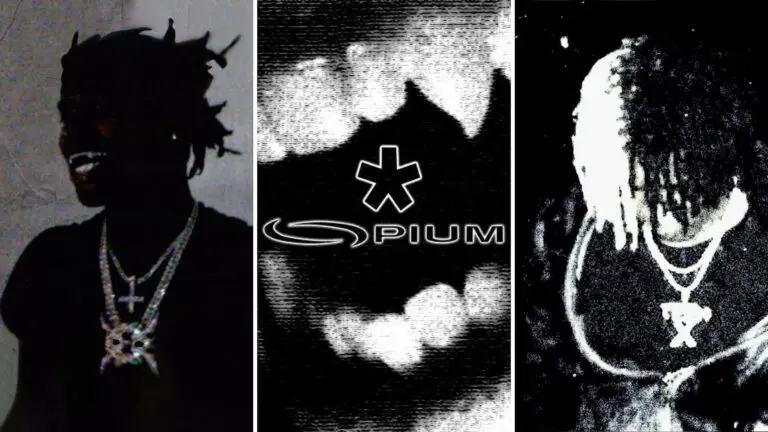Step into the world of Opium Style, where history intertwines with fashion to create a mesmerizing tapestry of design. Journey with us as we unravel the origins, evolution, and influence of this captivating aesthetic that continues to shape trends today. Get ready to explore the allure and impact of like never before!
Decoding Opium Style Origins and Cultural Significance
Opium Style traces its roots back to the opulent days of the Qing Dynasty in China, where it was an integral part of elite social circles. The opulence and luxurious fabrics associated with Opium Style reflected the wealth and status of those who adorned themselves in such attire.
The cultural significance of Opium Style goes beyond mere aesthetics; it embodies a sense of tradition, heritage, and craftsmanship passed down through generations. This aesthetic not only symbolizes elegance but also serves as a nod to historical narratives deeply embedded in Asian culture.

Incorporating intricate details like intricate embroidery, rich silk fabrics, and ornate accessories, Opium Style is a celebration of artistry and attention to detail. Each piece tells a story steeped in history and tradition that transcends time and borders.
Opium Style A Journey Through History and Fashion
Opium Style has a rich history that intertwines with both cultural traditions and fashion evolution. Originating from the opulent East, this style journeyed through time, leaving its mark on design aesthetics worldwide.
In ancient times, was associated with luxury and sophistication in regions like China and India. The intricate patterns and vibrant colors reflected the opulence of these civilizations.
As trade routes expanded, made its way to the West during the 19th century, captivating artists and designers with its exotic allure. Its influence could be seen in various art forms such as textiles, ceramics, and even architecture.
Throughout the decades, Opium Style underwent reinterpretation by designers who blended traditional elements with modern trends. This fusion gave rise to unique creations that honored the heritage of this style while adapting it to contemporary tastes.
Today, Opium Style continues to inspire fashion houses and interior designers alike as they draw inspiration from its ornate motifs and luxurious textures. The journey of through history serves as a testament to its enduring appeal in the world of design.
The Allure of Opium Style Understanding its Impact on Design
Opium Style holds a mesmerizing allure that transcends time and culture, captivating designers and fashion enthusiasts alike with its exotic charm. The intricate patterns, vibrant colors, and luxurious fabrics of have left an indelible mark on the world of design. Its impact can be seen in various artistic disciplines, from fashion to interior decor.
The fusion of Eastern aesthetics with Western sensibilities creates a unique blend that continues to inspire contemporary designs. Opium Style evokes a sense of mystery and opulence, drawing people into its enchanting world. From elaborate embroidery to flowing silhouettes, each element reflects the rich heritage and craftsmanship behind this style.
Designers often draw inspiration from traditional Opium motifs such as lotus flowers, dragons, and bamboo to infuse their creations with a touch of elegance and history. By understanding the essence of Opium Style, designers are able to create pieces that pay homage to this timeless aesthetic while adding their own modern twist.
From Tradition to Modernity The Evolution of Opium Style
Opium Style has undergone a fascinating evolution from its traditional roots to modern interpretations. Originating from the opulent robes worn by Chinese emperors and nobility, this style has transcended centuries with its intricate designs and luxurious fabrics.
As time progressed,began to merge with Western influences, resulting in a fusion of East-meets-West aesthetics. The incorporation of contemporary elements brought a fresh perspective to this iconic fashion trend, appealing to a wider audience across the globe.
In today’s fast-paced world, designers continue to reinvent by infusing it with innovative techniques and materials. This evolution highlights the adaptability of tradition in meeting the demands of modernity while preserving the essence that makes Opium Style so alluring.
The journey from tradition to modernity showcases how fashion can seamlessly blend heritage with innovation, creating a harmonious balance between past and present influences.
Opium Style Trends Navigating Fashion and Design Inspirations
Opium Style trends have made a striking comeback in the world of fashion and design, blending traditional elements with contemporary aesthetics. From luxurious fabrics to intricate embroidery, this style exudes opulence and sophistication.
Designers are infusing Opium Style influences into their collections, creating pieces that celebrate craftsmanship and cultural heritage. The rich colors, ornate patterns, and flowing silhouettes evoke a sense of nostalgia while adding a modern twist.
Incorporating Opium Style into interior design has also gained popularity, with home decor enthusiasts embracing the elegance and charm it brings to living spaces. From statement furniture pieces to decorative accents inspired by Asian motifs, this trend is reshaping the way we decorate our homes.
Fashion influencers and tastemakers are showcasing their take on Opium Style through bold combinations and innovative styling techniques. This fusion of traditional elements with contemporary flair is captivating audiences worldwide, setting new standards for creativity and individuality in the industry.
Conclusion:
Opium Style is a captivating fusion of history, culture, and modern design. Its origins date back centuries, rooted in the rich traditions of the East. Over time, has evolved and adapted to contemporary trends while retaining its allure and mystique.
From intricate patterns to luxurious fabrics, continues to inspire designers and fashionistas worldwide. Its influence can be seen in various aspects of design – from clothing to home decor.
As we delve into the world of, we uncover a tapestry of creativity and innovation that transcends time. Whether embracing tradition or pushing boundaries with modernity, this aesthetic remains a timeless symbol of elegance and sophistication.
In exploring the evolution and impact of, one thing is clear: its legacy will continue to shape the creative landscape for years to come. So next time you admire a piece of fashion or design with an exotic flair, remember the enduring influence of Opium Style.
